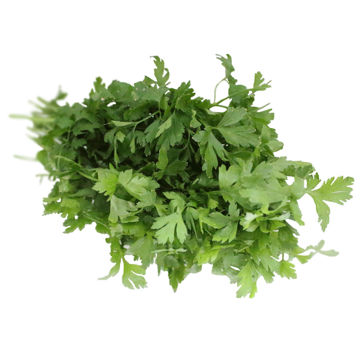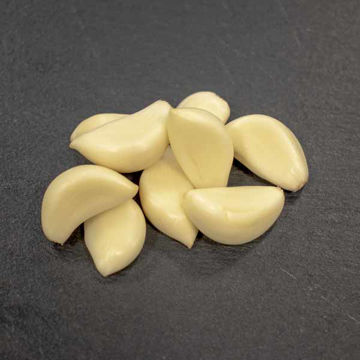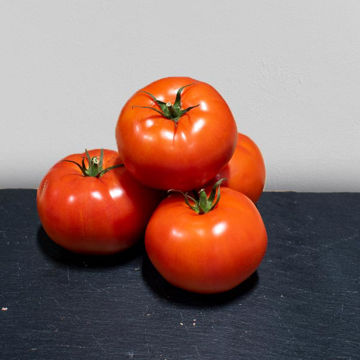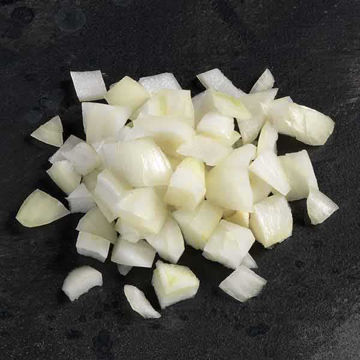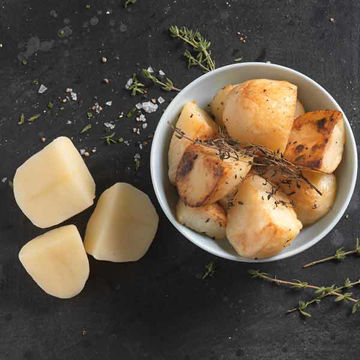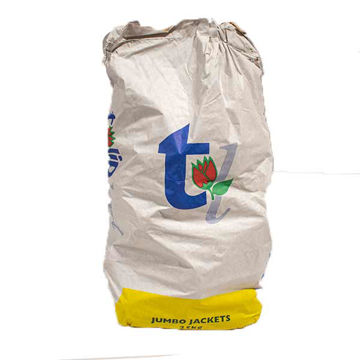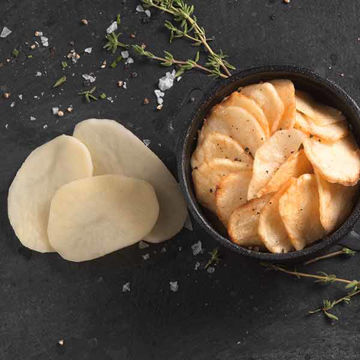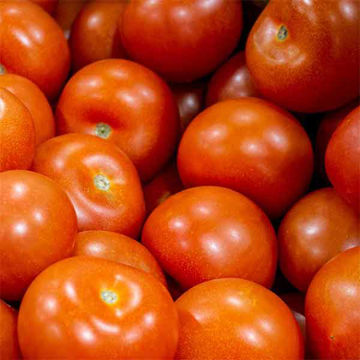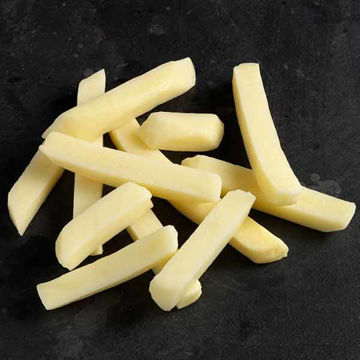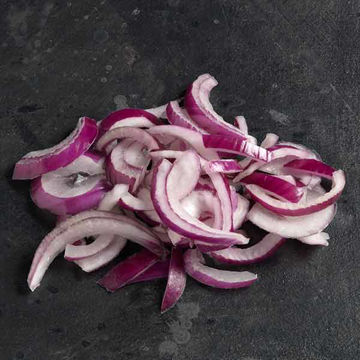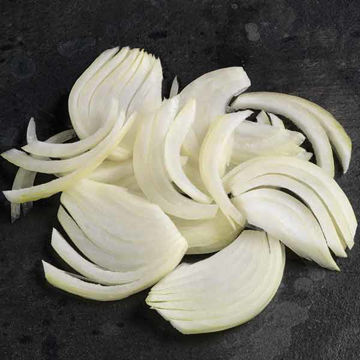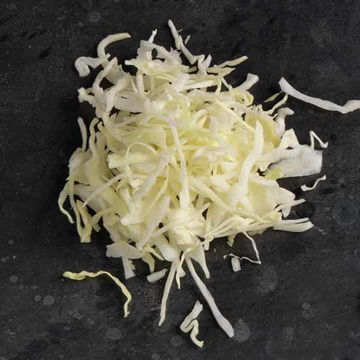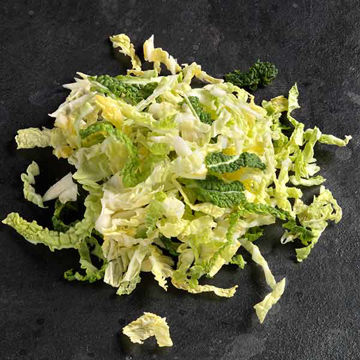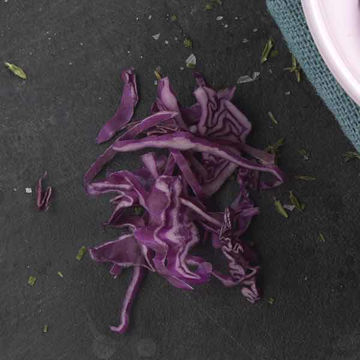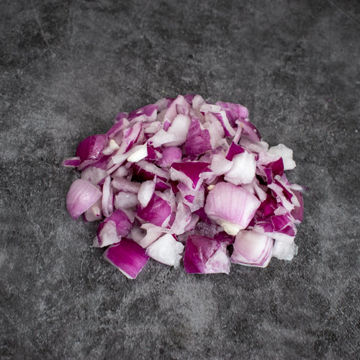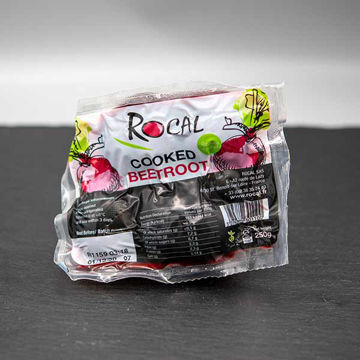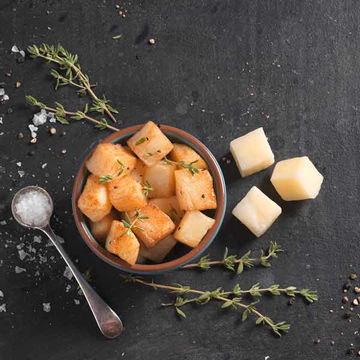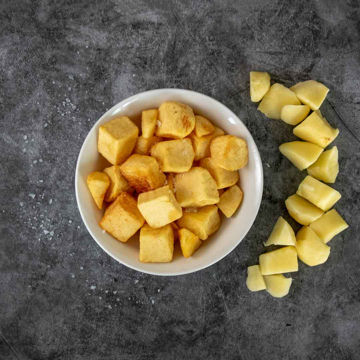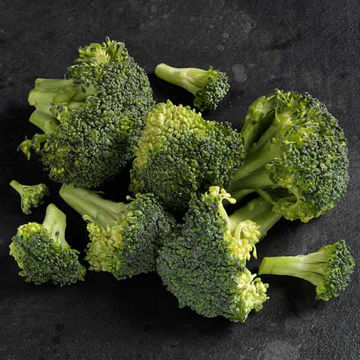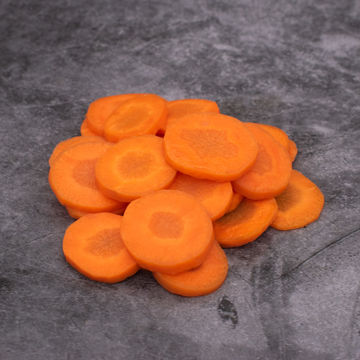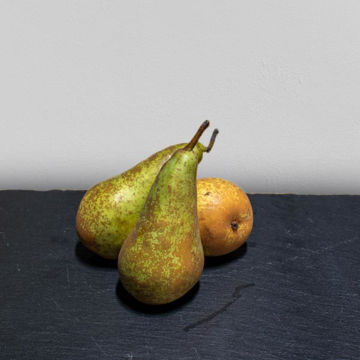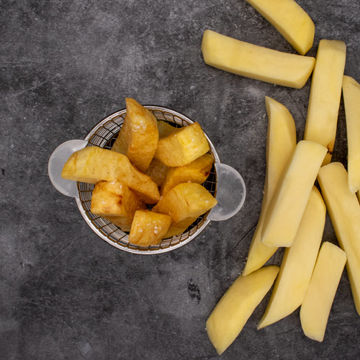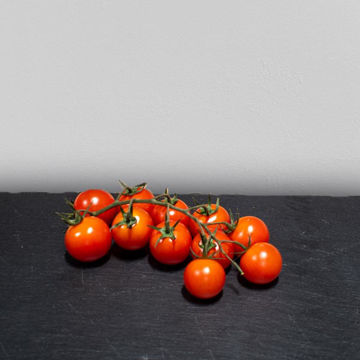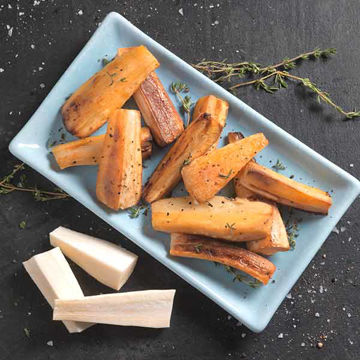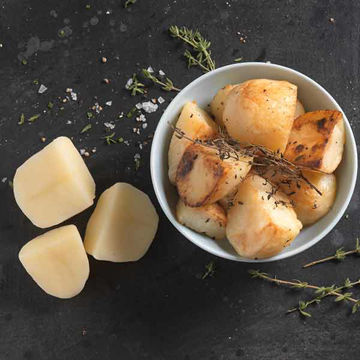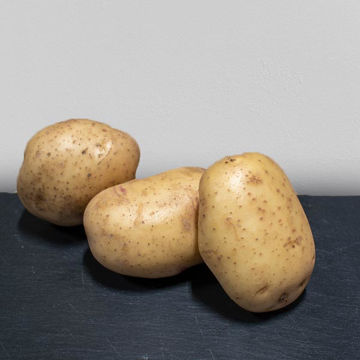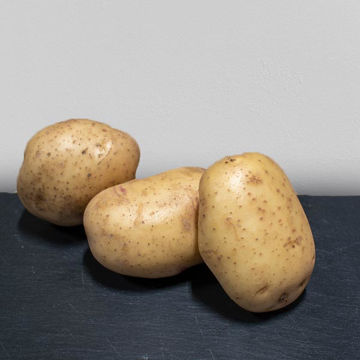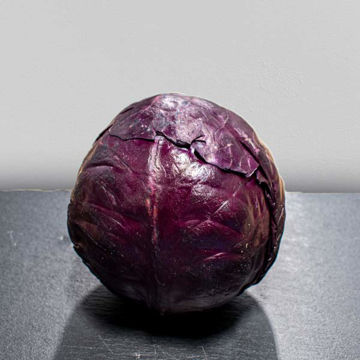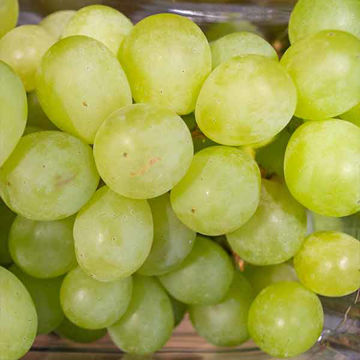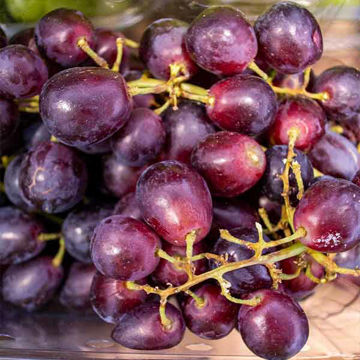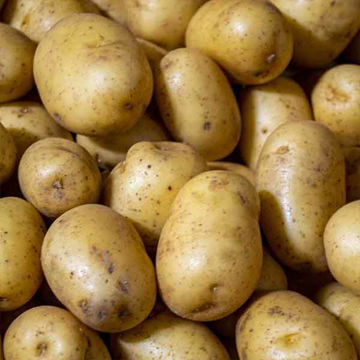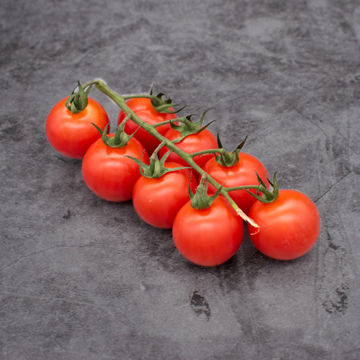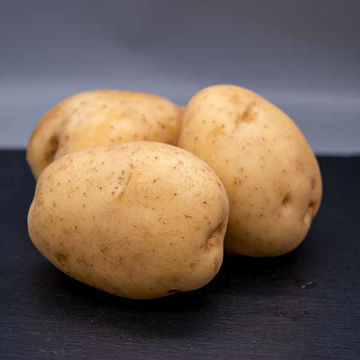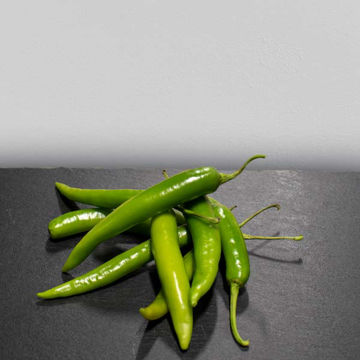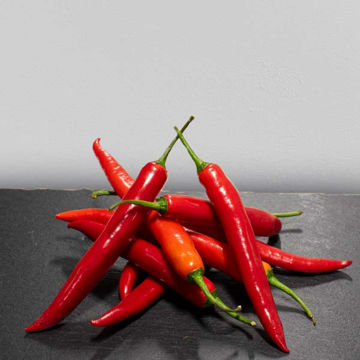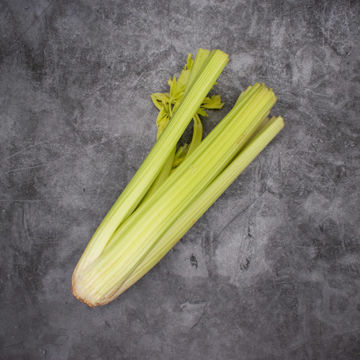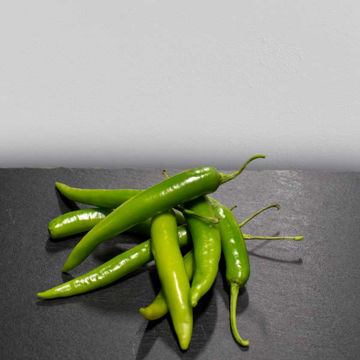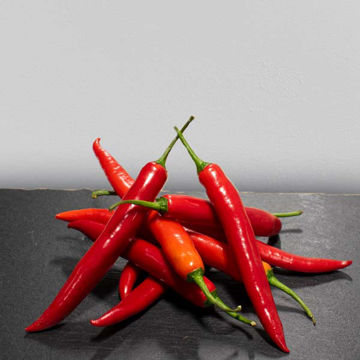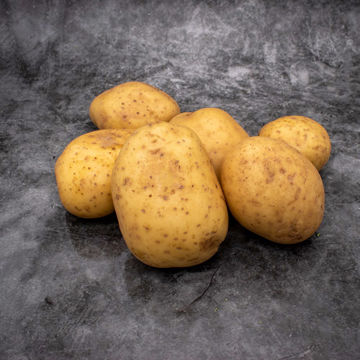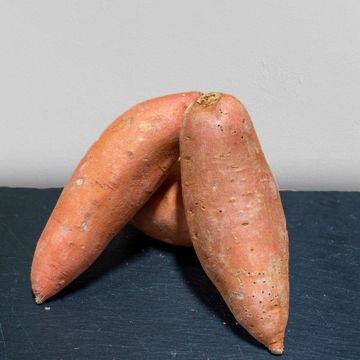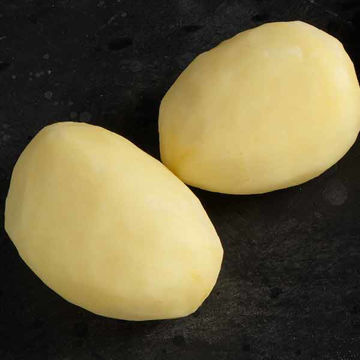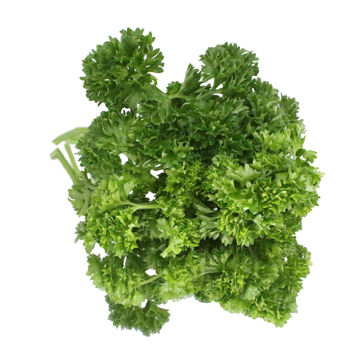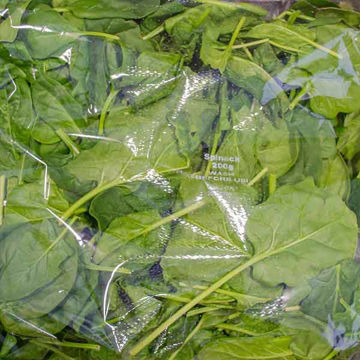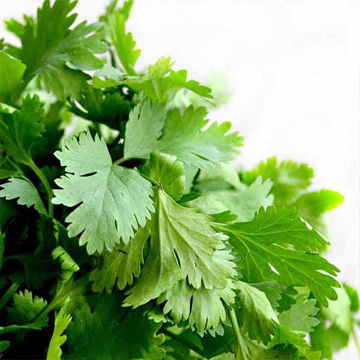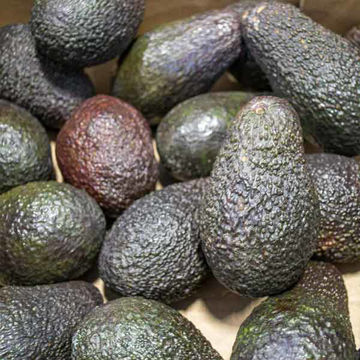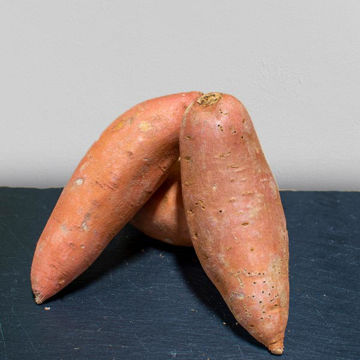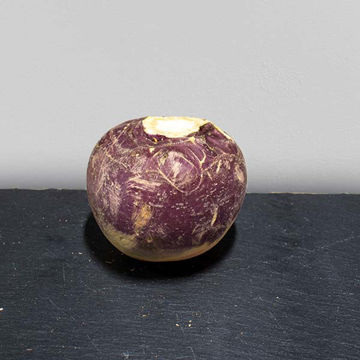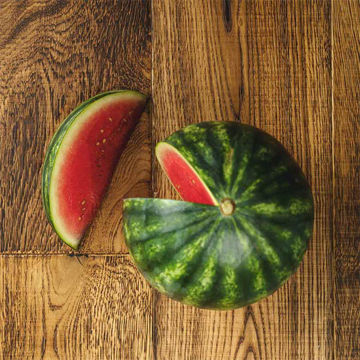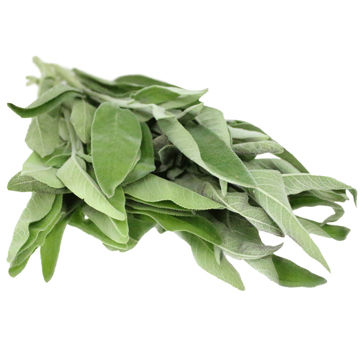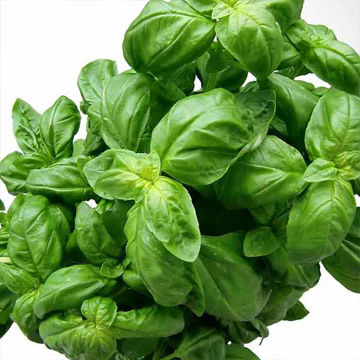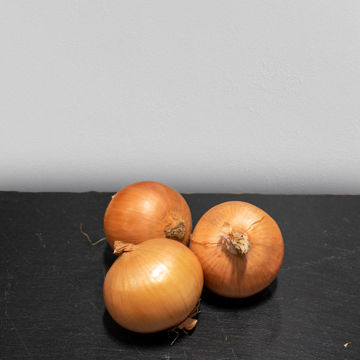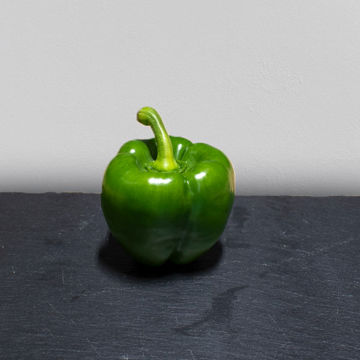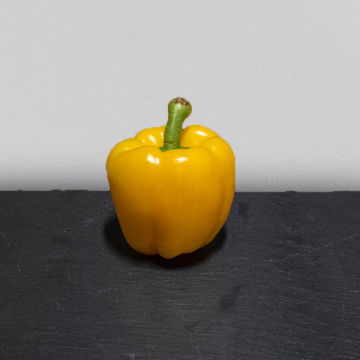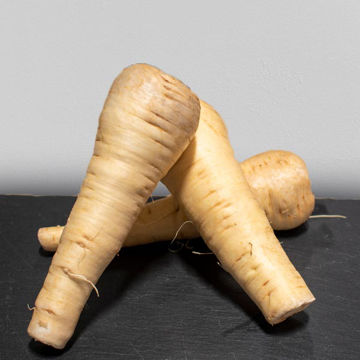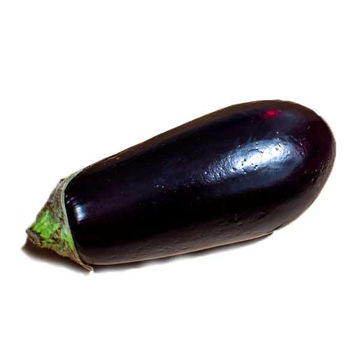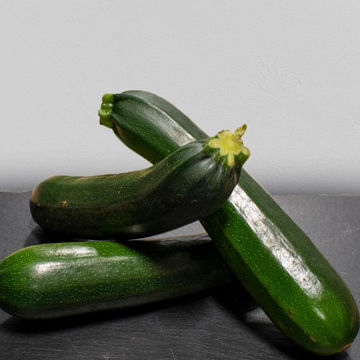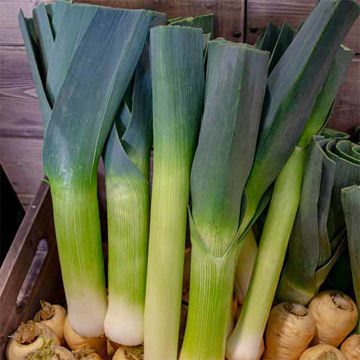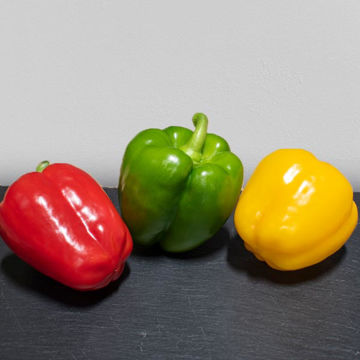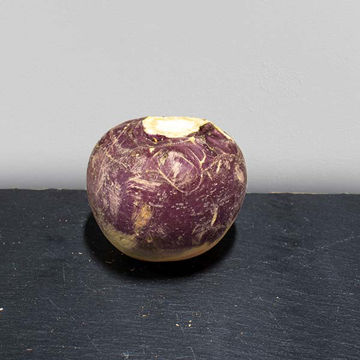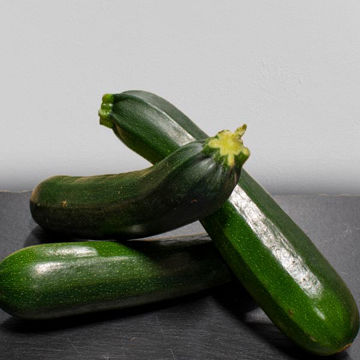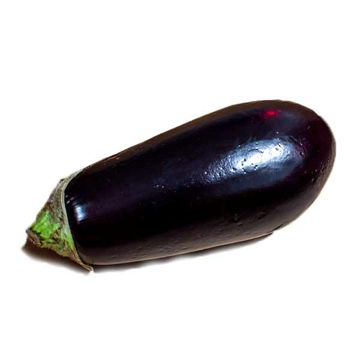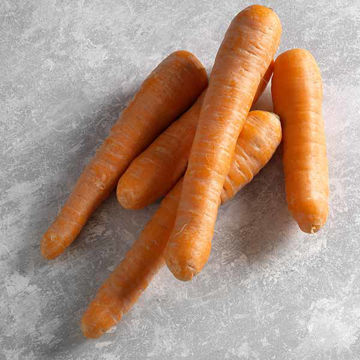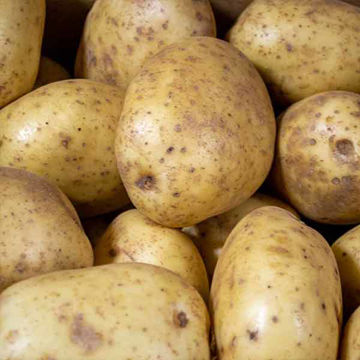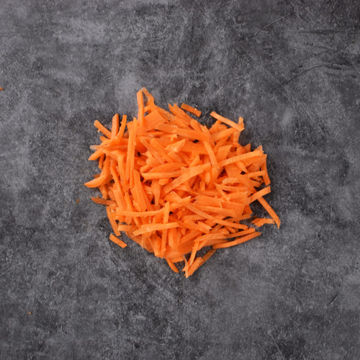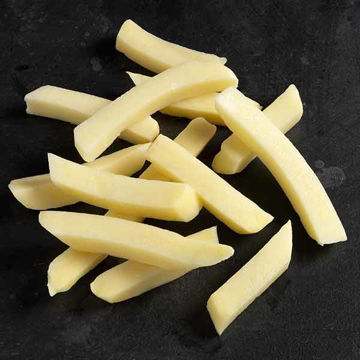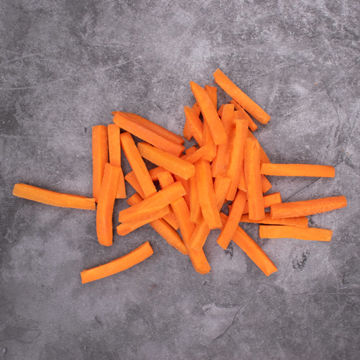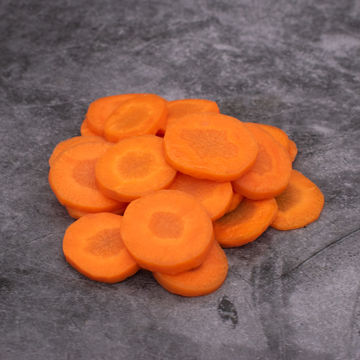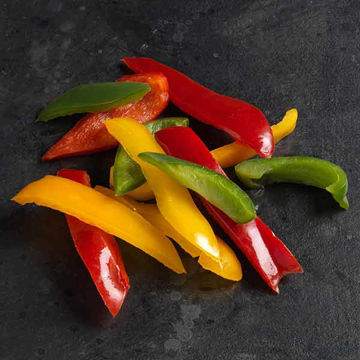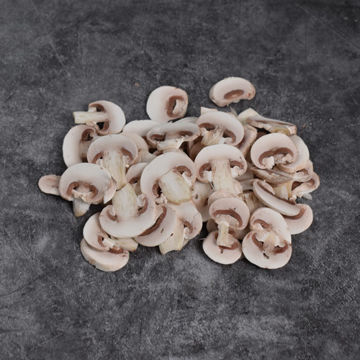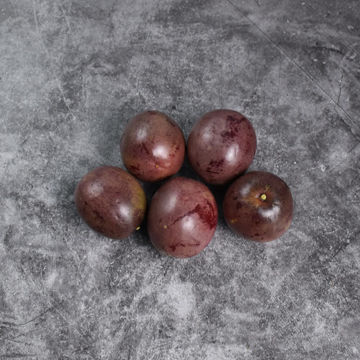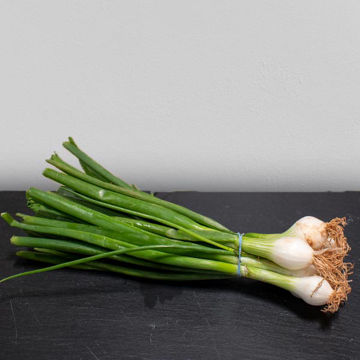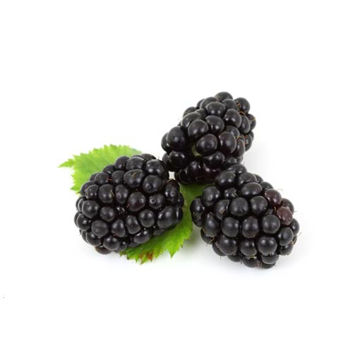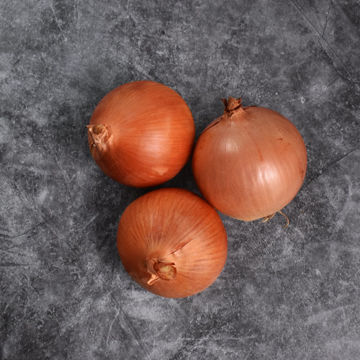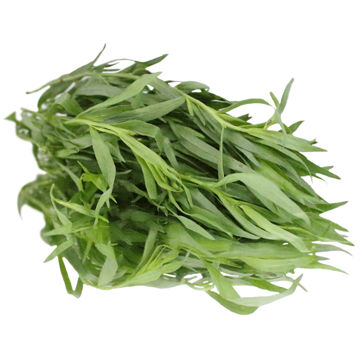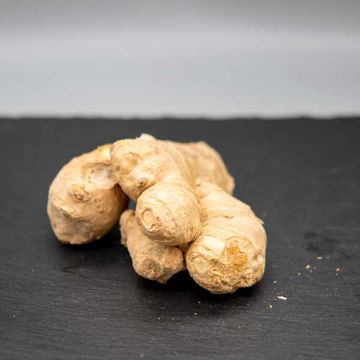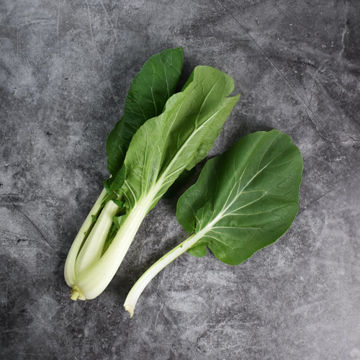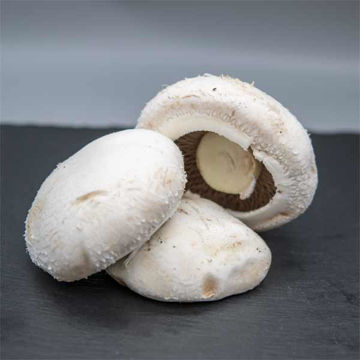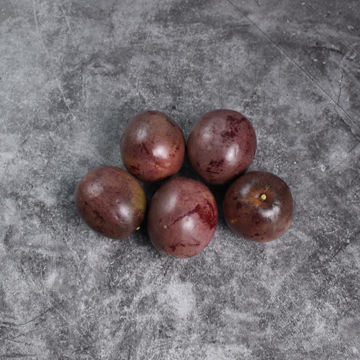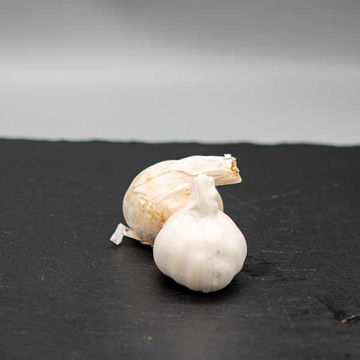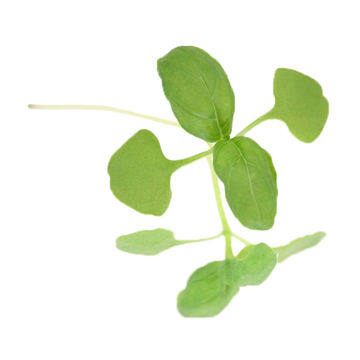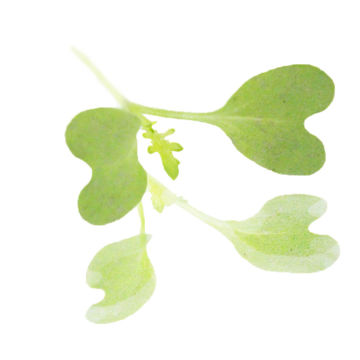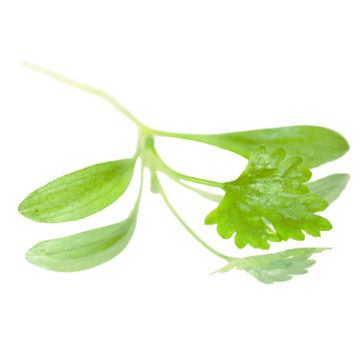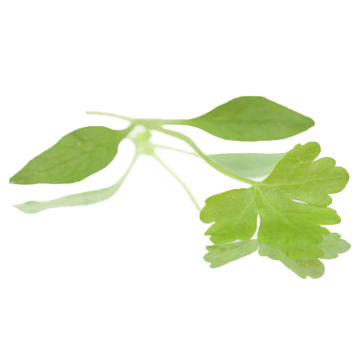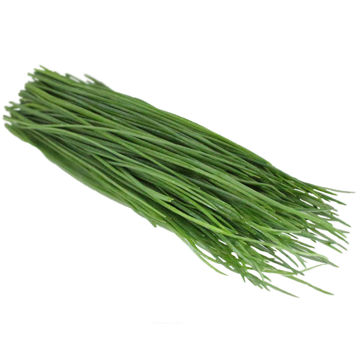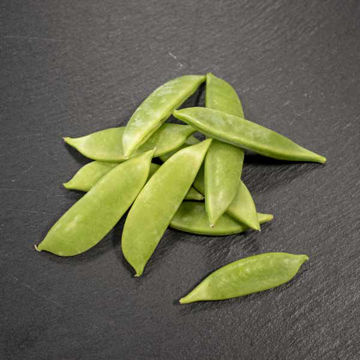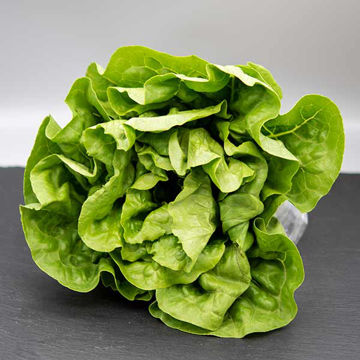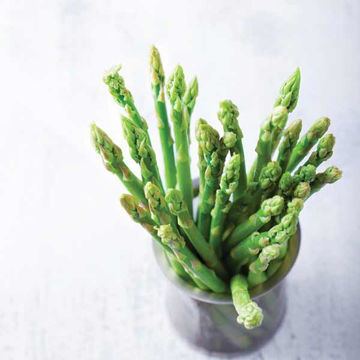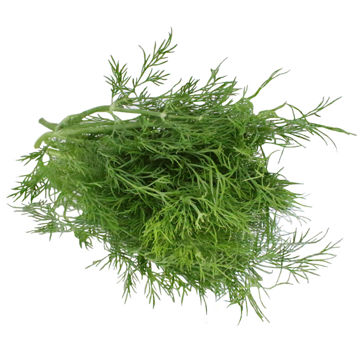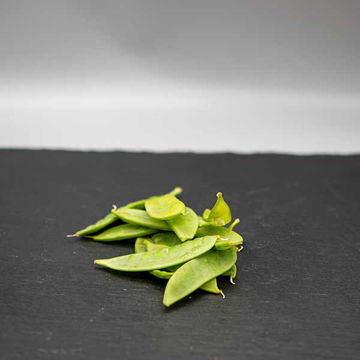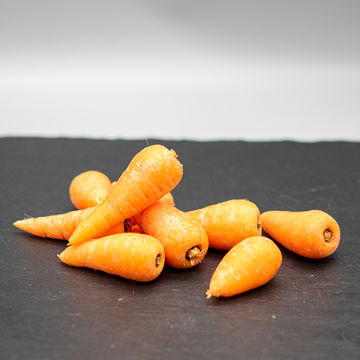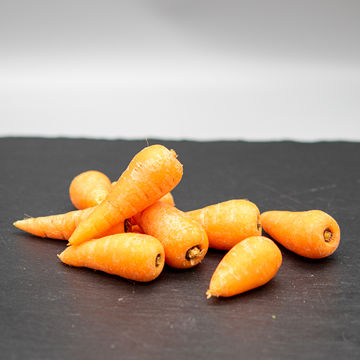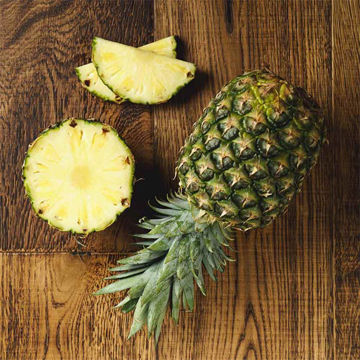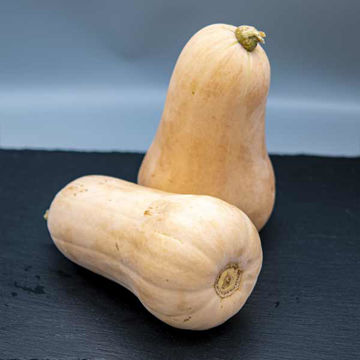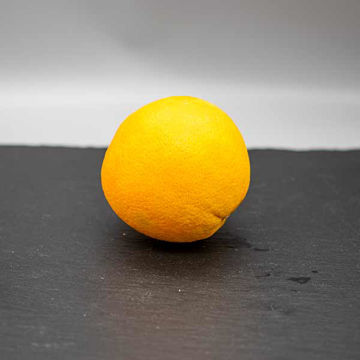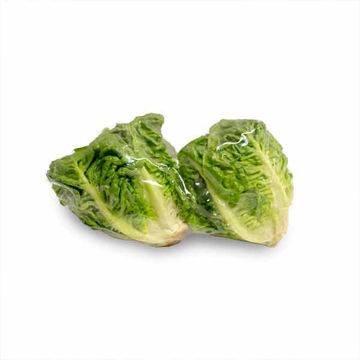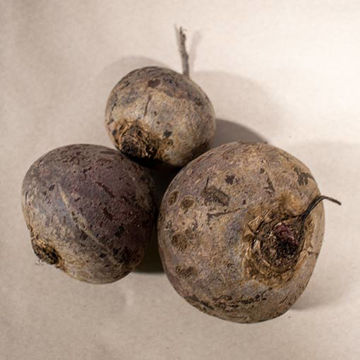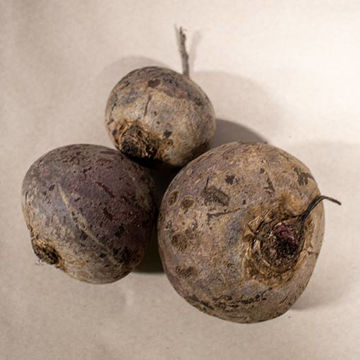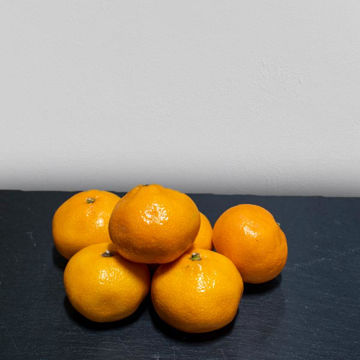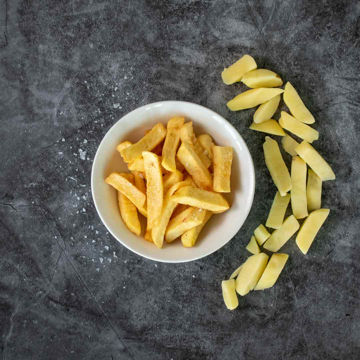Fresh Produce
Nurtured in Norfolk Flat Leaf Parsley (200g)
V2149
Flat Bunched Parsley (Petroselinum hortense) also known as Italian Parsley can be added to stocks and sauces. We suggest to use just the stems in a lightly coloured sauce to keep the leaves from colouring the dish. In addition, chop the flat-leafed herb and add to tabbouleh or mix with rice and dill for stuffed grape leaves. Furthermore, use this herb in marinades, dressings, coleslaw?s and potato dishes. Before the herb is used in culinary preparations, the Parsley is stripped from its stem and only the leaves are used. This aromatic herb, combines very well with other herbs without clashing. Flat parsley is know for being an ingredient in many dishes unlike curly parsley which is known for being a garnish.
£2.24
Pilgrim Fresh Produce Quartered Small Potatoes (5kg)
V2422
Whole smaller potatoes peeled, knife finished, hand cut into quarters and dipped to prevent discolouration.
£8.49
Pilgrim Fresh Produce 15mm Hand Cut Chips (5kg)
V2623
Whole potatoes peeled, knife finished then hand cut into 15mm chips and dipped to prevent discolouration.
£9.99
Pilgrim Fresh Produce 6mm Sliced Onions (2.5kg)
V2801
Whole peeled brown onion, topped and tailed and sliced to 6mm.
£8.75
Pilgrim Fresh Produce Shredded White Cabbage (2.5kg)
V2804
Whole, cored white cabbage sliced into 2mm wide shreds.
£2.99
Pilgrim Fresh Produce Shredded Red Cabbage (2.5kg)
V2858
Whole, cored red cabbage sliced into 2mm wide shreds.
£2.99
Pilgrim Fresh Produce 20mm Diced Red Onions (2.5kg)
V2914
Whole peeled red onion, topped & tailed and diced to 20mm (+/-1mm).
£8.49
Pilgrim Fresh Produce 20mm Diced Potatoes (5kg)
V9010
Whole potatoes peeled, knife finished, diced to 20mm and dipped to prevent discolouration.
£8.99
Pilgrim Fresh Produce 30mm Diced Potatoes Skin On (5kg)
V9033
Whole washed potatoes, diced to 30mm with the skin left on and dipped to prevent discolouration.
£8.99
Pilgrim Fresh Produce Broccoli Florets (2.5kg)
V1003
Whole Broccoli heads, trimmed of outer leaf and excess stalk base, cut into florets.
£13.99
Pilgrim Fresh Produce Sliced Carrots (2.5kg)
V1004
Whole carrots, rumbled, topped & tailed and cut into 5mm slices.
£5.99
Pilgrim Fresh Produce 20mm Steak Cut Chips (5kg)
V1174
Whole potatoes peeled, knife finished then cut into 20mm chips and dipped to prevent discolouration.
£9.99
Pilgrim Fresh Produce Parsnip Wedges (2.5kg)
V1190
Whole parsnip, topped and tailed and cut into wedges.
£12.49
Pilgrim Fresh Produce Quartered Potatoes (5kg)
V1191
Whole potatoes peeled, knife finished, hand cut into quarters and dipped to prevent discolouration.
£8.49
Pilgrim Fresh Produce Whole Peeled Potatoes (5kg)
V1414
Whole potatoes suitable for mashing, peeled, hand finished and dipped to prevent discolouration.
£8.49
Nurtured in Norfolk Curly Parsley (250g)
V1442
Add freshly chopped Curly Leaf Parsley to potato salads, coleslaws and green salads. This bunched herb adds a fresh flavour to tomato sauces and salad dressings. Furthermore, it is best used as herbed marinades for meats, such as fish or chicken. Also, Curly Parsley will lighten the intensity of any garlic dish, or the overpowering aromas of fish in a dish. Did you know that chewing this herb after a meal can help freshen breath and is a great palette cleanser in between courses. Although, primarily this herb is a decorative garnish on dishes such as soups, roasts and cheese or charcuterie platters. It makes for a pleasant visual effect on a range of savoury culinary preparations.
£2.35
Nurtured in Norfolk Coriander (100g)
V1617
Bunched Coriander has an intensely herbal and citrusy flavouring, which is best suited for cooked dishes. The edible leaves are commonly tossed into green and grain salads, salsa and chutneys. In addition, use the flavour of Coriander to enhance a variety of main dishes, such as tacos. Cilantro has a very versatile flavour that compliments many different ingredients and is used throughout many cuisines. For example, the Caribbean, Asia and South America. The leaves can also be chopped or mixed with oil and frozen for a longer shelf life. The flavour also compliments a wide variety of meats such as poultry, beef, pork and turkey. As well as seafood including fish, shrimp and scallops.
£1.69
Nurtured in Norfolk Sage (100g)
V1769
This bunched herb is known as culinary, kitchen, garden or true Sage. This isn?t a bunched herb to taste raw due to its cottony texture. Furthermore, it is best served cooked in a variety of savoury dishes. It works well when combined with other herbs and complements a variety of different foods. The strong aromatic flavours of Salvia Officinalis means it pairs well with meats, such as pork, sausage, and lamb as well as poultry or soft cheeses. Sage can be added to stocks or soups to enhance their flavour. You may know this herb best for its use in traditional stuffing flavouring for a Sunday roast dinner. Alternatively you can find Sage being used in traditional Chinese herbal teas.
£1.72
Nurtured in Norfolk Basil (100g)
V1772
Bunched Basil is best used when added to sauces, pasta salads and meats, such as grilled fish or roasted chicken or add a pinch of chopped Basil herbs to a Bloody Mary or garnish a traditional cocktail with this aromatic herb. In addition, due to this herb being fairly delicate, use it to make a paste or to simply decorate a plate before serving up the main course. Compliment the citrus flavours by pairing with tomatoes, garlic, onion, pear, mint and strawberry. Basil is an aromatic herb used whole, chopped, or crushed in a wide variety of savoury and sweet dishes. The edible leaves are most commonly used raw and are lightly torn, tossed into grain salads and noodle dishes.
£1.91
Pilgrim Fresh Produce 15mm Chip Shop Chips (5kg)
V2080
Whole potatoes peeled, knife finished then cut into 15mm chips and dipped to prevent discolouration.
£9.99
Pilgrim Fresh Produce 10mm Carrot Batons (5kg)
V2103
Whole carrots, topped & tailed and cut into 10mm batons.
£9.99
Pilgrim Fresh Produce 5mm Sliced Carrot (5kg)
V2104
Whole carrots, rumbled, topped & tailed and cut into 5mm slices.
£9.99
Nurtured in Norfolk Tarragon (100g)
V1770
Bunched Tarragon pairs well with egg dishes, poultry, and sauces like béarnaise. Tarragon can also be used to flavour vinegars and soft drinks. In addition, try steeping the herb in hot liquid as this will draw out the anise flavour. Often used in the French Béarnaise sauce. This bunched herb is incorporated into salad dressings and sauces as well as chicken and potato salads. Tarragon leaves can be snipped and tossed into green and grain salads or used as a garnish. The soft leaf is usually best added at the last minute, so it remains fresh, otherwise the herb will just wilt under latent heat. Tarragon stems can handle higher temperatures, so you could add to casseroles or when steaming, without wasting the aromatic herb.
£2.12
Nurtured in Norfolk Green Basil Micro-leaves (25g)
V1279
Green Basil micro cress is used to add flavour, texture and colour to a range of dishes and canapés. It?s most commonly used as a flavourful and attractive edible garnish. Just like the mature Basil herb, this micro cress works well with classic pairings. For example, pair with tomato and mozzarella. For sweet dishes this microgreen works well with strawberries. Like most microgreens, green basil is intended for raw preparations. This is because it will wilt if exposed to prolonged heat. Micro Green Basil cress works well on classic flavours and dishes such as pizza and pasta, but can also be used to garnish sweet dishes. The delicate leaves can be incorporated into summer fruit salads as well as chocolate and lemon verbena desserts.
£2.64
Nurtured in Norfolk Mizuna Micro-leaves (30g)
V1280
Mizuna micro cress is also know as Water Greens and is best used as a raw garnish for savoury dishes. If using on a hot dish, it is best to use Micro Mizuna as a garnish right at the end, to ensure the micro cress doesn?t wilt. Alternatively, Mizuna micro cress can be used in salads. It?s popular to mix Micro Water Greens with other sharp salad leaves. Or, try sprinkling over soups, stews, cheese platters, roasted meats, pasta or risotto. Furthermore, as a Japanese Mustard Cress, this micro green is very popular in Asian cuisine. The greens can be used to garnish sushi, steamed rice and Asian vegetable side dishes. Known for its peppery taste, this snappy micro herb also works well when sprinkled on canapés.
£2.49
Nurtured in Norfolk Coriander Micro-leaves (25g)
V1281
Coriander micro cress is one of our most versatile cresses. It can be used as a garnish and flavouring. Also known as Cilantro, this microgreen can be used in both hot and cold savoury preparations. This micro herb is popular on breakfast dishes such as avocado and eggs. It can also be sprinkled atop ?bolder? dishes. For example, a few shoots can be placed atop Asian curries, fish dishes and canapés. Most commonly, Micro Coriander is used within Mexican and Thai cuisines, as well as Chinese and Indian cuisine. Micro Cilantro pairs well with ingredients such as coconut milk, chilli, citrus, ginger and tomato.
£2.64
Nurtured in Norfolk Parsley Micro-leaves (25g)
V1608
Parsley micro cress can be used as a flavourful raw garnish and can be used whole or chopped. For example, both the stems and leaves can be chopped and added to soups and stews at the end of the cooking process, to impart a fresh green flavour and prevent wilting. Alternatively, Parsley cress can be sprinkled whole atop pasta dishes with tomato, cheese or cream-based sauces. The fresh flavour of citrus and clove enhances tomato sauces and salad dressings, as well as marinades. This micro herb will also lighten the intensity of garlic or the overpowering aromas of fish in a dish. Lastly, Micro Parsley cress pairs well with ingredients including basil, oregano, tarragon, lemon, beef, chicken, parmesan and lamb.
£2.64
Nurtured in Norfolk Chives (100g)
V1766
Chives Bunched Herb can be used as both a garnish and as an aromatic herb. Typically, Bunched Chives are added at the end of the cooking process because they lose flavour when heated. They pair well with other aromatic bunched herbs, such as parsley, tarragon, and chervil. Add them chopped to potato dishes, quiches, scrambled eggs, or a bagel with smoked salmon and cream cheese. Give butter a hint of flavour by adding Chives and use it on baked potatoes, steaks or use it as a rub for chicken. This herb pairs best with savoury dishes. Did you know that this herb is found in cuisines across the world including French and Swedish. This versatile herb can be paired with many culinary creations.
£2.21
Nurtured in Norfolk Dill (100g)
V1767
Dill is a versatile herb, used in fresh and cooked preparations, or as a garnish. Use in cream or wine-based sauces and pair with foods such as yogurt, cucumbers, lentils, tomatoes, dried fruit, seafood, poultry and noodles. Furthermore, Dill is a key ingredient in homemade dressings, such as ranch. This herb has a strong, distinct flavour that can overwhelm other flavours. So we suggest to use it sparingly. Due to its unique and strong taste, a little goes along way with this bunched herb. Moreover, even a small spring of this herb will add a noticeable aroma to your dish and makes for a fantastic garnish. Beware that Dill will lose its flavour the longer it?s cooked, so it?s best to add it at the last minute.
£1.69
Pilgrim Fresh Produce 15mm Chip Shop Chips (5kg)
V3879
Whole potatoes peeled, knife finished, then cut into15mm chips. The whole potato is passed through the machine and we include all pieces, including the thin and small pieces. This results in a 'traditional' chip shop style with small crispy pieces alongside the 15mm chips. Prepared with care in our on-site fresh produce preparation facility.
£9.99
Refine

